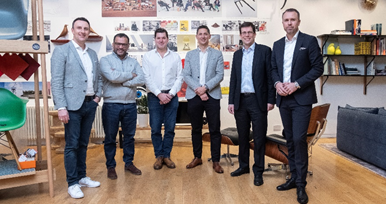The future of retail is frequently debated, but not often discussed in connection with the opportunities that Digital Signage can offer to Brick & Mortar. ZetaDisplay gathered an expert panel in January 2020 in London to discuss the current status and to point out a direction for the coming years for retail but also for other physical environments. The panel consisted of experts in retail design and concept development and was moderated by Stefan Schieker of Invidis Consulting Munich.

The panel agreed that there is a future for retail but “boring retail is dead”, as it was phrased by retail evangelist Steve Dennis two years ago. Retail has a successful future when it manages to accommodate three important things:
- TIME – the end consumer perceives it is worthwhile spending one’s own precious time in a retail environment.
- PURPOSE – the brands or retails physical place needs to have a purpose, not just selling random goods.
- DISCOVERY – The consumers need to learn or experience something new in the physical environment, leading to engagement.

“When it comes to Digital Signage, we need to move from Experience features to reliably show that our interface enables end consumers to engage with our customers’ brands”, mentions Per Mandorf, CEO & President for ZetaDisplay. During the past years, there has been too much attention on mind-blowing hardware solutions that the industry has underestimated the need of demonstrating the return of investment to its customer base: “Digital Signage needs to become more business-critical to the customer base than it is today. We will see further integrations with external software solutions, partnerships and an increased focus on value creation.
Enhanced functionalities and measurable engagement with the end consumer will become a must”, describes Mandorf and continues; tougher industry demand on measurable performance.
Nadeem Mogul of arber Design commented that “the created value today is completely different – the time is the most critical aspect for consumers, so they need to feel that it is worthwhile spending time in your physical environment”. The experience inside a physical store doesn’t stop at a large screen, “it should be clear to all stakeholders why somebody is investing in Digital Signage”, adds Stefan Schieker of Invidis Consulting.
Quantifiable consumer engagement ratios are moving much more to the center of attention, so does the topic of sustainability. Digital Signage is a rather young industry where rapid market growth and maturity has been the center for the industry. The panel agreed that overall system efficiencies can offset sustainability concerns. “The screens consume energy, but the industry needs to clearly show that efficiency and sustainability really gain materialize”, adds Stefan Schieker. Although sustainability doesn’t stop at providing energy-efficient signage solutions. It reaches much further than that today and it is summarized under the connotation of being a brand with a purpose.

As one example of that trend are that brand and retail formats are developing globally where only locals are employed to guarantee that the generated taxed income remains in the neighborhood like Diptych?. Other formats like Gandhi’s flipflops allocate part of their net sales to charities as the incumbent part of their business model. The conclusion of the panel was that certain formats are on the way of becoming a movement where purpose and engagement replace classical brand awareness and conversion-oriented marketing activities.
Even if the Digital Signage industry can do a lot to show that its professionalization is moving into the right direction, the customer side has to do some homework too: “Digital is happening, we perceive that the different departments on the buying side, whether it is IT, marketing or sales that don’t coordinate their demands sufficiently enough”, says Doug Barber of Barber Design Consultancy.
“The physical shop is the showroom for both online and offline transactions, both concepts need each other”, comments Gary Watton, Head of Sales for Visplay UK. The panel concluded that both online and offline are dependent on each other. Successful physical environments long-term needs to go further than today in offering beyond the digital experience a human-centric interaction that is purpose-driven and engaging.
“We at ZetaDisplay are committed to acting as thought leaders in bringing our discipline to the next conceptual level. Digital Signage is a very powerful tool if used correctly, which is our mission for the coming years to prove to our key stakeholders”, Per Mandorf concludes.
Essential retail trends
- People care about the purpose of the business. The questions of how the customers and the employees are treated become more important.
- Retail goes on to the next level: customers and employees want to experience more, therefore, the maximum focus should be on this. 86% want to pay more for a better experience.
- The usage of Artificial Intelligence in retail is increasing. For example, AI is used in sales prediction – it is as much as 90% accurate in predictions of what goods are going to be sold in the next 30 days.
- The physical stores have a new role now: they aren’t just stores anymore, they are more of social centers and event venues. It’s not only about selling, but it is also about combining sales with experiences, as people don’t have to go to the stores for shopping anymore. They still do so, for the experience.
